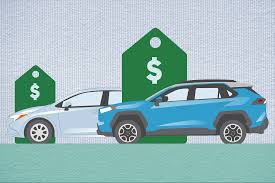When the pandemic eases, and road travel resumes on a large scale, its likely that more of the vehicles on the road will be in the peculiar segment called crossovers Crossovers have grown from under 4% of the market in 2000 to nearly 40% in 2018. The growth in popularity of crossovers has taken market share nearly equally from both cars and larger vehicles like pickups, minivans and SUVs.
But, what is a crossover? In the simplest terms, crossovers are vehicles raised just a little higher than a regular car, in order to look like an SUV, but handle and drive more like a standard car, with limited to moderate off-road capabilities. The other big difference between them and traditional SUVs – and a big part of their appeal – is they generally deliver better fuel economy. The three top selling crossovers in the U.S. only get an average of 10% less fuel economy than the top three selling midsize sedans , but provide almost 1.5 times as much cargo space.
Despite cries that the crossovers lack the driving dynamics (responsiveness, speed, cornering) of typical sedans or sports cars, the trend shows no sign of abating. In fact, some industry watchers estimate that within 5 years, crossovers, along with SUVs, could make up more than 90% of all new car sales, squeezing sedans, cheaper sub-compact cars and more performance-oriented sports cars into the margins.
This holds true even if oil prices become less stable. Advances made in auto-body construction has resulted in lighter frames and more adaptability in design. This means that consumers can have space and utility without compromising ruggedness too much, and fewer persons are regularly off-roading as part of their regular driving routine.










